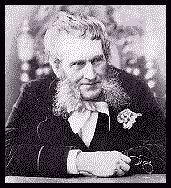

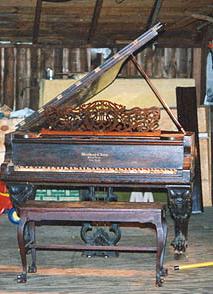
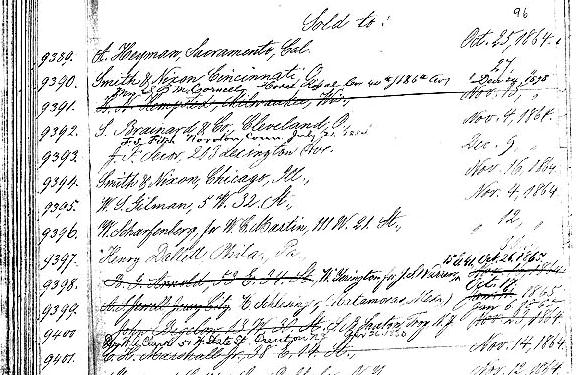
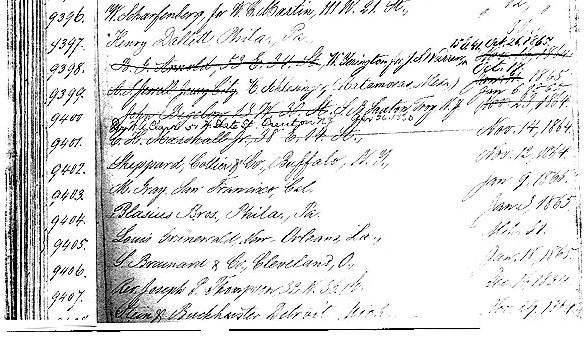
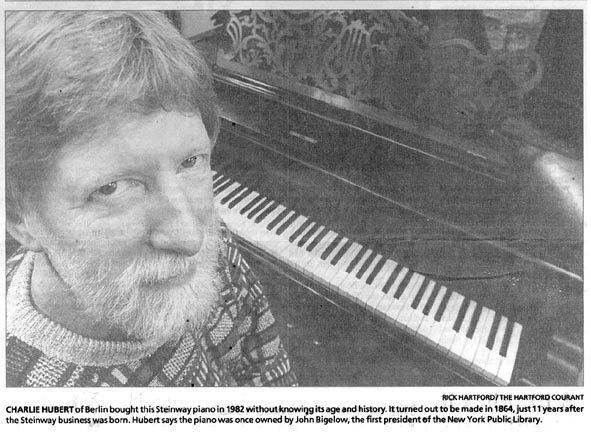
A RARE FIND, NOW RESTORED
By MAURICE TIMOTHY REIDY
The Hartford Courant
February 20, 2001
BERLIN - When Charlie Hubert descended into that cellar in
upstate New York nearly 20 years ago, he didn't know what
he would find.
It was the summer of 1982, and he was vacationing with his
family in the Adirondacks when he stumbled upon an ad in a
local paper for an old Steinway piano. At the time, Hubert
was only three years into his piano servicing business, but
he knew enough to know that a Steinway was worth looking
at.
At first look, the piano appeared to be in good shape. The lid
was closed, providing some protection for the internal parts.
And the dry mountain air seemed to have preserved the
rosewood finish. Impressed, Hubert decided to buy it.
But it wasn't until about 10 years ago that the Berlin resident
made the discovery people in his business dream about. The
instrument, he learned, was made by Steinway in 1864 -
only 11 years after the legendary piano maker first opened
for business.
"This comes along once in a lifetime, if that," Hubert said
recently at his Berlin workshop. "I've been in the business 20
years, and I've never seen anyone have a piano like this."
Now, after spending roughly 400 hours restoring his treasure,
Hubert has put it up for sale. He said he paid less than
$10,000 for it, and now he's looking to sell it for a cool
quarter-million.
Hubert says the cost is justified, considering its age and the
fact that it was once owned by someone famous. Well, sort
of famous. John Bigelow, a diplomat to France during
Abraham Lincoln's presidency, bought the instrument for his
New York City home in 1864. He would later become the
first president of the New York Public Library.
Hubert recounts this story on his Web site, where he has
compiled a blow-by-blow account of his search for the
various owners of the instrument. It turns out that Bigelow
owned the piano only for a few months, and then sold it to a
fellow in upstate New York. Hubert has located most of the
owners, but has been unable to track down who owned it
from 1903 to 1946.
The instrument itself is an "art-case piano," a style popular
in the 19th century characterized by ornate carvings and
painted surfaces. An article in a recent issue of Arts &
Antiques magazine notes that the art-case piano was the
"sine qua non of well-appointed salons and music rooms."
After he bought it, Hubert stored the instrument in his
workshop, a converted barn, which he shares with his father,
Donald, who restores player pianos. The Steinway sat there
for 16 years before Hubert started working on it. The
restoration process included replacing 31 of the ivory keys
and partially reconstructing one of the baroque legs.
So how does the old thing sound? Well, it's not your
standard piano, said Peter Harvey, the dean of the faculty at
Hartford Conservatory. Harvey recently performed some Civil
War songs on the piano at a concert in New Britain. It has a
very full sound, he said, almost like an orchestra.
"It's some sort of sound portal to another era," he said. "It
has a very different sound from any other piano."
Charles P. Hubert
Email: mailto:chasup@home.com
Phone: 860-223-3081, Fax: 860-348-0527
Address:
Charles P. Hubert
218 High Rd.
Kensington, CT 06037
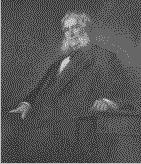
John Bigelow of Union

